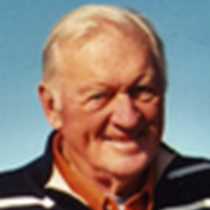Petersburg and Le Conte Bay, Alaska
The Sea Lion tied up early this morning at the Petersburg wharfs, Mitkof Island. Following breakfast, guests disembarked for a variety of Great Land adventures. The sun was high, framed in a blue sky. To the north, ranges of snow-capped mountains, including the tower called “Devil’s Thumb,” looked down on the scene.
Petersburg, known as Alaska’s “Little Norway,” was founded by Norwegian-born Peter Buschmann in 1897 as the site of Icy Straits Packing Company. Ice floes from the nearby Le Conte Glacier were harvested by the Packing Company to keep their salmon and halibut catches fresh. Despite the fact that Buschmann’s salmon cannery failed within a few years, the town eventually prospered with its burgeoning population of mostly Nordic settlers. Today it is one of the Alaska’s prominent fishing centers.
Several Sea Lion guests joined Tom McCallister as he walked the town piers which host one of the most colorful fishing fleets in the North Pacific. Other guest choices included helicopter and float plane trips. Helicopters landed on the Le Conte Glacier – for many passengers it was the thrill of a lifetime. Other activities included Zodiac trips across the Wrangell Narrows for “bog walks” with staff members on Kupreanof Island. Those naturalist hikes were atop a boardwalk threading its way among tannic pools, spongy soil, heavy mosses, and a variety of small trees. Here and there tiny streams – not large enough to support salmon – bubbled downhill toward the Narrows.
The names of Kupreanof and Mitkof Island and the nearby Wrangell Narrows are evidence of the 100-year Russian domination of the coastal area until the 1867 sale of Alaska by Russia to the United States. Prokopii Mitkof, Antonovich Kurpreianov (spelled “Kupreanof” in later years) and Baron Ferdinand P. Von Wrangell each held management positions in the famous Russian-American Company.
After lunch, guests boarded Zodiacs for dramatic cruises among floating icebergs. The bergs had calved from the Le Conte Glacier and were slowly melting and moving through Le Conte Bay. The great bay itself was called “Hulti” by the Tlingit Natives, which was their name for the mythical thunderbird. The Natives believed that thunder itself, including the cannon-like noises of calving Le Conte Glacier, were caused by the beating wings of the thunderbird.
The Sea Lion tied up early this morning at the Petersburg wharfs, Mitkof Island. Following breakfast, guests disembarked for a variety of Great Land adventures. The sun was high, framed in a blue sky. To the north, ranges of snow-capped mountains, including the tower called “Devil’s Thumb,” looked down on the scene.
Petersburg, known as Alaska’s “Little Norway,” was founded by Norwegian-born Peter Buschmann in 1897 as the site of Icy Straits Packing Company. Ice floes from the nearby Le Conte Glacier were harvested by the Packing Company to keep their salmon and halibut catches fresh. Despite the fact that Buschmann’s salmon cannery failed within a few years, the town eventually prospered with its burgeoning population of mostly Nordic settlers. Today it is one of the Alaska’s prominent fishing centers.
Several Sea Lion guests joined Tom McCallister as he walked the town piers which host one of the most colorful fishing fleets in the North Pacific. Other guest choices included helicopter and float plane trips. Helicopters landed on the Le Conte Glacier – for many passengers it was the thrill of a lifetime. Other activities included Zodiac trips across the Wrangell Narrows for “bog walks” with staff members on Kupreanof Island. Those naturalist hikes were atop a boardwalk threading its way among tannic pools, spongy soil, heavy mosses, and a variety of small trees. Here and there tiny streams – not large enough to support salmon – bubbled downhill toward the Narrows.
The names of Kupreanof and Mitkof Island and the nearby Wrangell Narrows are evidence of the 100-year Russian domination of the coastal area until the 1867 sale of Alaska by Russia to the United States. Prokopii Mitkof, Antonovich Kurpreianov (spelled “Kupreanof” in later years) and Baron Ferdinand P. Von Wrangell each held management positions in the famous Russian-American Company.
After lunch, guests boarded Zodiacs for dramatic cruises among floating icebergs. The bergs had calved from the Le Conte Glacier and were slowly melting and moving through Le Conte Bay. The great bay itself was called “Hulti” by the Tlingit Natives, which was their name for the mythical thunderbird. The Natives believed that thunder itself, including the cannon-like noises of calving Le Conte Glacier, were caused by the beating wings of the thunderbird.




